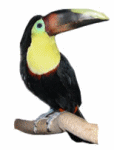| Hiya omsstravel.33333@blogger.com! Dr. Jungle says... "They could be too cute to be true, stunninginly beautiful,
|
2 new articles in "Dr. Jungle's Pets and Animal Speak" Haflinger
With a heritage traced to the Alpine mountain ponies, the Haflinger is very hardy and strong,but also sweet tempered! The Haflinger, also known as the Avelignese is a rather small but sturdy chestnut colored horse descended down from the Tyrolean ponies of Austria and northern Italy. These horses only stand between 13 to 15 hands high, however they are ponies… Read More Discover How to Observe Animals in the Wild
Ecologists, zoologists, and other animal scientists frequently enter the wilderness to study their main subject; animals. They patiently sit there and wait for animals to pass by so they can examine how they behave in their natural habitat, and they’ve been doing this for years. However, observing animals in the wild doesn’t have to be so scientific. Every animal lover can do it. In fact, animal observation has become a popular camping activity, you actually don’t have to be an animal expert. But you should keep in mind the following: 1. Find a good spot. A good spot is somewhere that not too many humans enter, but, for safety’s sake, isn’t too far away from your hiking or camping area. So how do you know you’re in a good spot? Head for the main trail and if you see more animal footprints than human tracks, then that’s probably good spot. It’s also a good practice to veer off from the main trail, but not stray too far away from it or you might find yourself wandering around, lost in the middle of nowhere. If you have chosen a specific animal to observe, however, conduct some research first to find out which areas it frequents. 2. Build a good blind. A blind is anything you can use to hide yourself from the animals so you don’t disturb and scare them. It can range from a pile of undergrowth to something as complicated as a store-bought blind that you can assemble and camouflage with branches, twigs, leaves, and stones. If you’re not into hard-core scientific observation and are just into this for pleasure, you can simply tie a piece of sturdy rope across two neighboring trees and lean long branches against the rope. 3. Blend in and be patient. Try waiting for a couple of days before you go back to your blind. This will allow the animals to get accustomed to it and not get too suspicious about the newly put up structure. When you decide to return to your blind, be sure that you are not intrusive and that you completely blend in. Wear clothes the same color of nature and do not wear any cologne or perfume. Animals have a very sensitive sense of smell and they can sniff the presence of any intruder right away. It’s also important that you patiently and quietly sit inside your blind while you wait for an animal to come ambling by. 4. Document your observations. If you are planning to do this again in the future, it’s a good practice to keep a record of what you have observed. Animals follow a fairly rigid schedule so it will be easier for you to catch one passing you by the next time you decide to observe animals in the wild again. Bring a notebook with you and take down notes of the times you saw animals of interest, how many were there and which direction they were heading. You could also set up a motion-sensing camera that could record the movement of the animals when they pass by. I would personally go for the notebook though – there’s nothing like a high-tech gadget to take away the natural feel of it all! Belle is a senior contributor to camping review and gear site NDParks.com and Green Living Site The Action Blog. Check out her latest article on outdoor survival kits. More Recent Articles
|
| Your requested content delivery powered by FeedBlitz, LLC, 9 Thoreau Way, Sudbury, MA 01776, USA. +1.978.776.9498 |

 Haflinger
Haflinger 

No comments:
Post a Comment